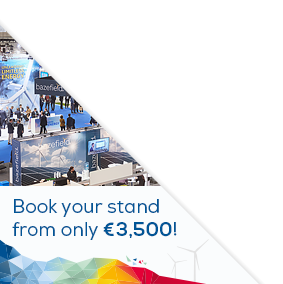Posters
Siblings:
ProceedingsProgrammeProceedingsSpeakersPostersContent PartnersElectrification StageMarkets TheatreR&I ActivitiesStudent DayProgramme Committee & abstracts reviewersPresenters dashboardCome meet the poster presenters to ask them questions and discuss their work
We would like to invite you to come and see the posters at our upcoming conference. The posters will showcase a diverse range of research topics and provide an opportunity for delegates to engage with the authors and learn more about their work. Whether you are a seasoned researcher or simply curious about the latest developments in your field, we believe that the posters will offer something of interest to everyone. So please, join us at the conference and take advantage of this opportunity to learn and engage with your peers in the academic community. We look forward to seeing you there!

PO150: OWA GloBE: The importance of pre- and post-campaign lidar calibrations
Elliot Simon, Senior R&D Engineer, DTU
Abstract
Lidars are complex systems comprising of electronic, optical and mechanical components which have the possibility of malfunctioning or degrading over time. Calibrations of these instruments are performed to gauge confidence and traceability in the measured values and to provide estimates of the associated uncertainties. Doppler wind lidars measure the projection of the wind speed along the path of their laser beam, also called the “line-of-sight” (LOS) or “radial” wind speed. It is therefore ideal to evaluate the operational performance of a lidar based on this fundamental unit to minimize assumptions and uncertainties introduced into post-processed byproducts. A large-scale offshore deployment of six scanning lidars was carried out as part of the OWA GloBE project, with the aim of observing wind-farm scale blockage effects. Due to the small-expected magnitude of the phenomena, comprehensive checks and controls were performed to minimize the measurement uncertainties. Part of this work included onshore calibrations of the lidars both before and after the offshore campaign. A LOS speed intercalibration was performed on all lidar pairs using regression analysis to determine the coefficient and relative LOS speed uncertainty of each pair of lidars. This method is appropriate because the analysis work is designed for relative wind speed comparisons rather than for absolute accuracy. The pre-campaign intercalibration results were excellent with no required corrections and a relative LOS speed uncertainty of 0.3%. Following the offshore campaign, the systems were again installed side-by-side onshore and the calibration activities were repeated. This time, two of the six lidars required offset corrections to be applied. This result has since been independently verified by the lidar manufacturer who discovered a hardware issue which caused the deviations. We present the results of both calibration activities to demonstrate the need for doing so, and explore methods to determine when the failures occurred.







